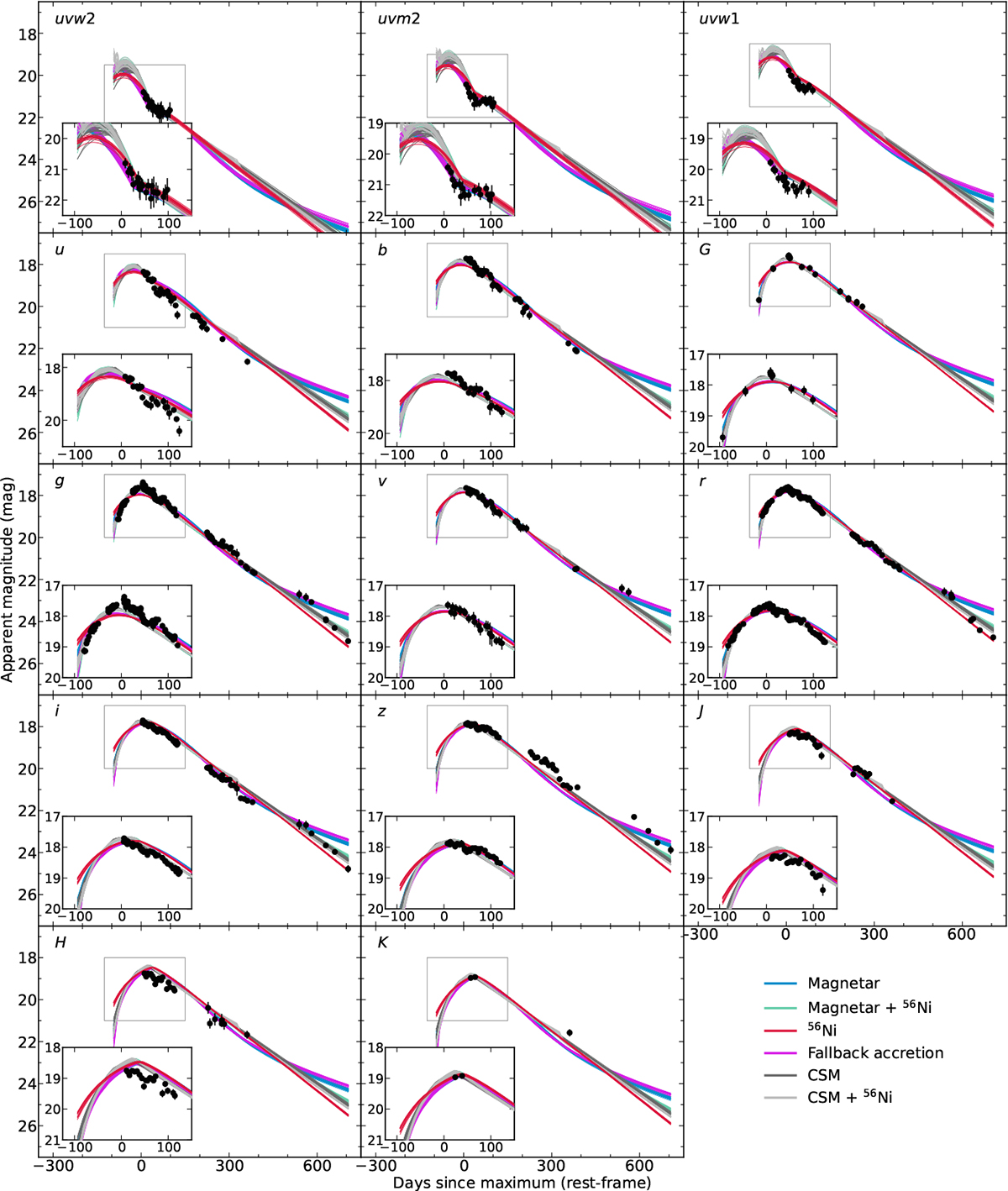Fig. 24.

Download original image
Modelling of the light curves from the rest-frame UV to the NIR with MOSFiT. All models provide an adequate description of the data up to tmax+400 days, though with differences in the fit quality. At later times, the models diverge. The pure nickel model is the only model that captures the evolution after tmax+500 days and has physically meaningful parameters. The central engine models (magnetar and fallback) predict a flattening of the light curve due to a power-law-shaped heating rate in contrast to powering by 56Ni that has an exponential energy deposition rate. The magnetar+nickel model also captures the full evolution. However, the inferred model parameters would be either physically implausible or require an exotic star, which we deem not viable. We note that the Keck photometry at tmax+539 days and tmax+562 days is not corrected for host contamination owing to the lack of Keck reference images to perform image subtraction. The expected host contribution is ≈10%.
Current usage metrics show cumulative count of Article Views (full-text article views including HTML views, PDF and ePub downloads, according to the available data) and Abstracts Views on Vision4Press platform.
Data correspond to usage on the plateform after 2015. The current usage metrics is available 48-96 hours after online publication and is updated daily on week days.
Initial download of the metrics may take a while.


